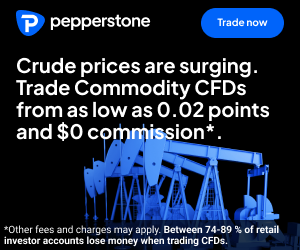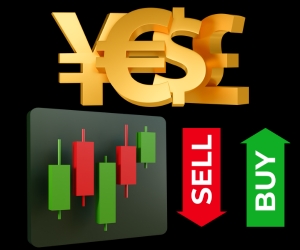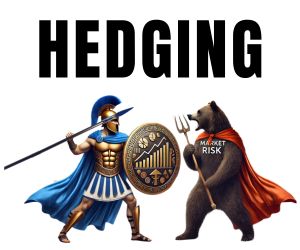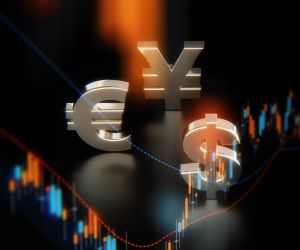MARGIN TRADING IN FOREX MARKETS
Margin trading is one of the defining features of the Forex market, allowing traders to control positions far larger than their account balance. By borrowing capital from a broker, traders can amplify profits but also magnify losses. Understanding how margin works, what margin calls mean, and how leverage impacts risk is essential for anyone stepping into currency trading. This guide explores the basics of margin, its effect on profit and loss, and how to use leverage responsibly.

Margin Basics
At its core, margin is a form of collateral. When a trader opens a position in the Forex market, the broker requires a certain percentage of the trade’s total value to be deposited upfront. This deposit, known as margin, serves as a good-faith guarantee that the trader can cover potential losses. Without margin, it would be impossible for retail traders to access the multi-trillion-dollar foreign exchange market at scale, since few individuals could fund positions worth hundreds of thousands of dollars outright.
How Margin Works
Consider a simple example. Suppose you want to trade one standard lot of EUR/USD, which equals 100,000 euros. If your broker requires 1% margin, you only need to set aside €1,000 (or the dollar equivalent) to open the position. The broker effectively lends you the remaining €99,000 to control the full trade size. This leverage magnifies potential profits if the trade moves in your favour, but it also magnifies losses if the trade moves against you. Margin therefore acts as both an enabler and a risk amplifier.
Margin Requirement and Leverage
The percentage of funds you must provide is called the margin requirement. Lower margin requirements mean higher leverage. For instance, a 1% margin requirement equates to 100:1 leverage, because you control 100 times your deposited amount. Conversely, a 5% margin requirement equates to 20:1 leverage. Different jurisdictions impose caps on maximum leverage. In the United States, retail traders are limited to 50:1 on major pairs. In the European Union, the cap is stricter at 30:1. These rules are designed to protect retail investors from catastrophic losses.
Types of Margin
Brokers typically distinguish between three types of margin:
- Initial margin: the minimum deposit required to open a new trade.
- Maintenance margin: the amount you must keep in your account to maintain an open position.
- Variation margin: the additional funds required if market movements reduce your account equity below the maintenance threshold.
Understanding these categories helps traders anticipate when they may face a margin call or need to inject additional funds.
The Role of Equity and Balance
Two terms often confuse beginners: account balance and equity. The balance reflects your deposited funds plus closed profits and losses. Equity, by contrast, includes both your balance and any unrealised profit or loss from open trades. Brokers use equity to calculate your usable margin. For example, if your account balance is $5,000 and you have an open position showing a $500 floating loss, your equity is $4,500. This reduction in equity affects how much additional margin you have available for new trades.
Free Margin and Used Margin
Once you understand equity, the next concept is the split between free margin and used margin. Used margin is the amount set aside to back your open positions. Free margin is what remains available to open new trades or to absorb further losses. If free margin falls too low, you risk triggering a margin call. A healthy trading practice is to monitor your margin level—the ratio of equity to used margin—since it provides a real-time view of how close you are to that threshold.
Margin Level and Broker Rules
Margin level is typically expressed as a percentage. Brokers calculate it by dividing equity by used margin, then multiplying by 100. A margin level of 500% indicates ample room to trade, while a level near 100% is dangerous. Most brokers issue a margin call when margin level drops below a set limit, often 100%. Some will automatically close positions once the level falls to 50% or lower. These safety mechanisms are intended to protect both trader and broker from accounts going negative.
Why Margin Matters in Forex
Margin is more than a technical requirement; it shapes a trader’s entire approach to risk. Without margin, few traders could participate in Forex beyond tiny trades. But margin also means that a small movement in price can have outsized consequences for your account. A 1% move against you at 100:1 leverage wipes out your entire margin deposit. This dynamic underscores why margin is both the gateway to opportunity and the source of greatest danger in retail Forex trading.
Examples from Real Markets
Take the Swiss franc shock of January 2015, when the Swiss National Bank abandoned its cap against the euro. EUR/CHF plummeted nearly 30% in minutes. Traders holding leveraged long positions saw their margin evaporate instantly. Many accounts were wiped out, and some brokers themselves suffered massive losses. This episode highlights the razor’s edge nature of margin: it can multiply returns in calm markets but can devastate accounts in volatile ones. Understanding margin basics is the first step toward using leverage with respect and caution.
Profit & Loss
Margin trading magnifies the size of every trade you place. That amplification is what makes Forex appealing to many traders, but it also explains why losses can escalate so quickly. To understand the stakes, it’s essential to break down how profit and loss (P&L) are calculated in leveraged positions and why small price changes have such large effects on your account equity.
How Profit and Loss Are Calculated
In Forex, profit or loss depends on the change in the exchange rate multiplied by the position size. Let’s say you buy one standard lot of EUR/USD (100,000 units) at 1.1000. If the price rises to 1.1050 and you close the position, that’s a 50-pip gain. At $10 per pip for a standard lot, your profit is $500. Without leverage, controlling such a large trade would require over $100,000 in capital. With 100:1 leverage, your margin deposit may have been only $1,000. This makes the $500 profit a 50% return on your margin in a single move of less than half a cent.
The flipside is equally powerful. If EUR/USD had dropped by 50 pips instead of rising, you would have lost $500—half of your initial margin. A 100-pip decline would have wiped out your $1,000 deposit entirely. The mechanics are straightforward, but their implications are profound: leverage compresses the distance between modest price movements and account-changing results.
The Role of Pips and Position Size
Every profit or loss calculation in Forex revolves around the pip, the smallest price unit for most currency pairs. The value of one pip depends on your position size. For a standard lot (100,000 units), a pip is usually worth $10. For a mini lot (10,000 units), it’s $1. For a micro lot (1,000 units), it’s just $0.10. Traders who use high leverage on large lot sizes experience extreme swings in P&L. By contrast, those who trade micro lots with modest leverage experience more manageable fluctuations. Choosing position size wisely is as important as analysing charts.
Unrealised vs Realised P&L
When you open a position, your profit or loss starts accumulating immediately as the market price moves. This is called unrealised, or floating, P&L. It changes tick by tick. Once you close the position, the P&L is “realised” and added to or subtracted from your account balance. Brokers calculate account equity by combining balance with unrealised P&L. A floating loss can erode your free margin, bringing you closer to a margin call even if you haven’t closed the trade. This is why watching equity, not just balance, is critical.
Margin Calls and Forced Liquidations
The link between P&L and margin becomes most evident when losses trigger a margin call. If unrealised losses reduce your equity below the required maintenance margin, your broker may demand additional funds. If you fail to top up, the broker can liquidate your positions automatically to prevent further losses. In volatile markets, this forced closure can lock in steep losses at unfavourable prices. Traders who misunderstand margin sometimes assume brokers will give them more leeway. In reality, most brokers enforce strict rules, and liquidations are executed automatically by platform systems.
Psychology of Amplified Gains and Losses
Beyond the math, leverage affects trader psychology. A rapid $200 gain on a $1,000 margin deposit feels exhilarating; a $200 loss feels devastating. This emotional rollercoaster often leads to overtrading, revenge trading, or abandoning risk controls. Professional traders stress that discipline—not excitement—is the key to survival. Recognising that margin transforms small market moves into huge equity swings helps keep emotions in check. Many seasoned traders recommend treating each pip as a unit of risk rather than focusing on dollar amounts, to avoid the trap of emotional trading.
Real-World Examples of Margin Losses
The 2015 Swiss franc shock offers a dramatic case study. Traders long EUR/CHF at high leverage lost their entire margin in minutes as the franc surged. In many cases, losses exceeded deposits, leaving traders owing money to their brokers. Less extreme but more common are smaller account blow-ups caused by over-leveraging. A trader with $2,000 who risks the full amount on one 100:1 leveraged position may find that a move of just 20 pips—barely noticeable in a daily chart—can wipe out their account. These scenarios underline the fragile line between profit and loss in leveraged trading.
Managing P&L with Risk Controls
The best traders don’t avoid losses—they manage them. Stop-loss orders, prudent position sizing, and risk-reward ratios are essential tools. For example, if you risk 20 pips to target 40 pips, you need only a 50% win rate to be profitable. By contrast, traders who risk 100 pips to make 10 pips are setting themselves up for inevitable failure. Margin trading is unforgiving; those who succeed approach P&L with strict rules and consistent discipline. Keeping risk per trade small—often 1–2% of equity—is one way to ensure survival over the long haul.
Using Leverage
Leverage is the double-edged sword at the heart of margin trading. It enables traders to control large positions with a fraction of the capital, but it also exposes them to amplified risk. How leverage is applied, understood, and managed often determines whether a trader survives in the long run or burns through their account in weeks. Using leverage responsibly is about more than broker limits or headline ratios; it requires discipline, context, and strategy.
What Leverage Really Means
When a broker offers leverage of 50:1, 100:1, or even 500:1, many traders mistake it for free money. In reality, leverage is simply a borrowing arrangement that allows you to control a bigger position relative to your margin deposit. With 100:1 leverage, a $1,000 margin lets you open a $100,000 position. Every pip in a standard lot trade is worth $10. That means a 20-pip move in the wrong direction erases 20% of your margin. Understanding this math is critical before pressing the buy or sell button.
Global Regulations on Leverage
Different markets regulate leverage differently. In the United States, retail traders are limited to 50:1 on major pairs and 20:1 on minors and exotics. The European Securities and Markets Authority (ESMA) caps retail leverage at 30:1 for majors. In Australia and parts of Asia, higher ratios such as 200:1 or 500:1 are available. These limits are not arbitrary; they reflect regulators’ concerns about retail traders’ tendency to over-leverage. Understanding what’s legally allowed in your jurisdiction is the first step toward setting realistic expectations.
Choosing the Right Leverage
Experienced traders rarely use the maximum leverage offered. Instead, they tailor leverage to their strategy and risk appetite. A day trader seeking 10–20 pip moves may use higher leverage but with tight stop-losses. A swing trader holding positions for days may prefer lower leverage to withstand larger market swings. The point is that leverage should serve the strategy, not the other way around. Using too much leverage is like driving a sports car at full speed in traffic—exciting but unsustainable.
Leverage and Risk Management
Leverage without risk controls is reckless. To use it wisely, traders combine leverage with position sizing and stop-loss orders. For example, a trader with $10,000 might risk only 1% per trade, or $100. With a 20-pip stop-loss, that equates to a position of 0.5 standard lots. Even though the broker might allow far larger exposure, the trader voluntarily caps leverage to align with their risk tolerance. This disciplined approach ensures that no single trade can cause catastrophic damage.
The Illusion of Small Moves
Forex prices often move in fractions of a cent. To newcomers, a 20-pip swing in EUR/USD may look insignificant. Under high leverage, however, those tiny moves can be life-changing. A $1,000 account using 200:1 leverage can be wiped out in minutes during a volatile session. The illusion of small moves is one of the main reasons retail traders underestimate leverage. What seems like harmless fluctuation can, in fact, decide the fate of an entire trading account.
Professional Perspectives on Leverage
Institutional traders also use leverage, but typically in much smaller doses. A hedge fund may employ leverage of 2:1 or 3:1, not 100:1. The difference lies in scale and discipline. Institutions focus on steady returns and survival, while retail traders often chase outsized gains. Adopting a professional mindset—treating leverage as a modest tool rather than a lottery ticket—is one of the best ways to build longevity in trading. Many professionals emphasise consistency over excitement: small, repeatable gains compounded over time.
Best Practices for Responsible Leverage
There are a few guiding principles that help traders keep leverage in check:
- Never risk more than 1–2% of account equity on a single trade.
- Use stop-loss orders consistently to prevent unlimited losses.
- Scale leverage up or down depending on market volatility.
- Backtest strategies at different leverage levels before trading live.
- Treat leverage as optional, not mandatory—just because 500:1 is available does not mean you must use it.
Real-Life Examples of Responsible Leverage
Consider two traders with identical accounts of $5,000. The first uses 200:1 leverage, opening a position worth $1 million. A 25-pip adverse move erases the entire account. The second trader uses 20:1 leverage, opening a $100,000 position with a stop-loss of 50 pips. A similar move costs them $500—10% of the account—painful but survivable. Over time, the second trader is far more likely to stay in the game, even if both strategies perform equally well. The lesson is clear: responsible leverage is not about maximising profits, but about ensuring you live to trade another day.








